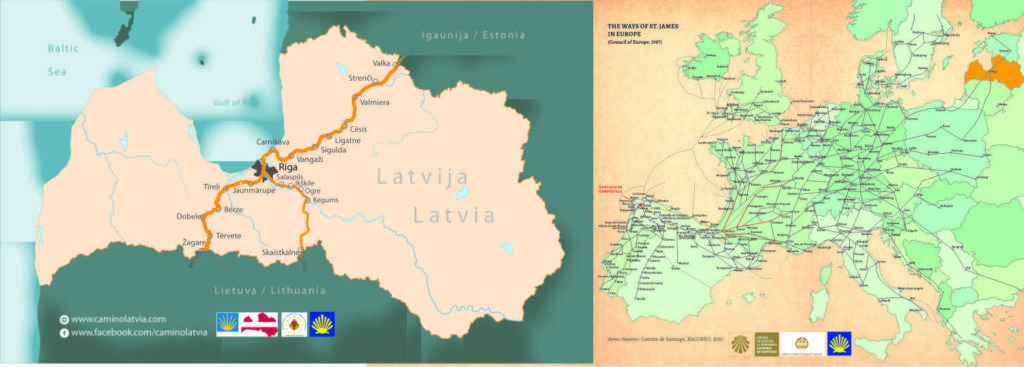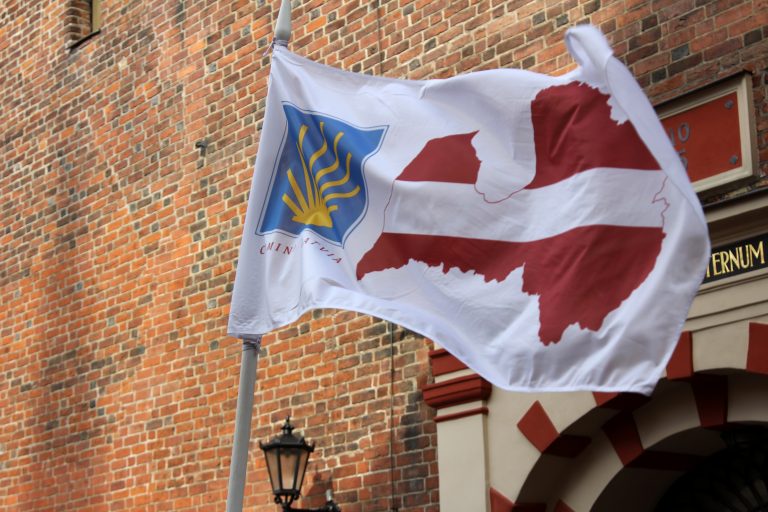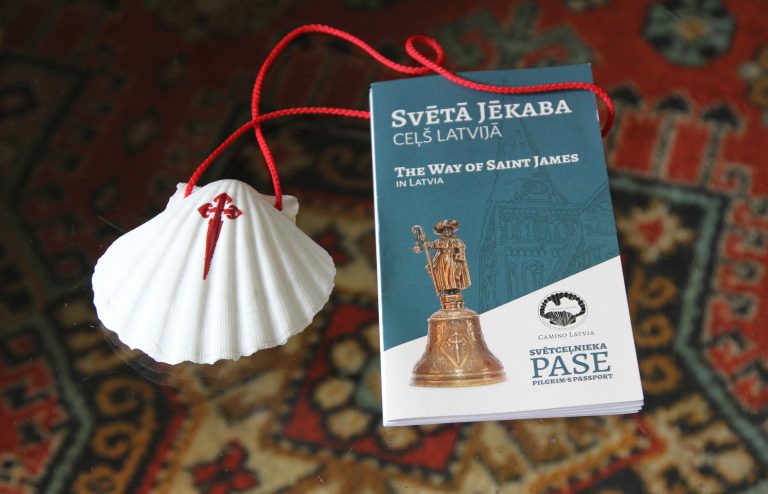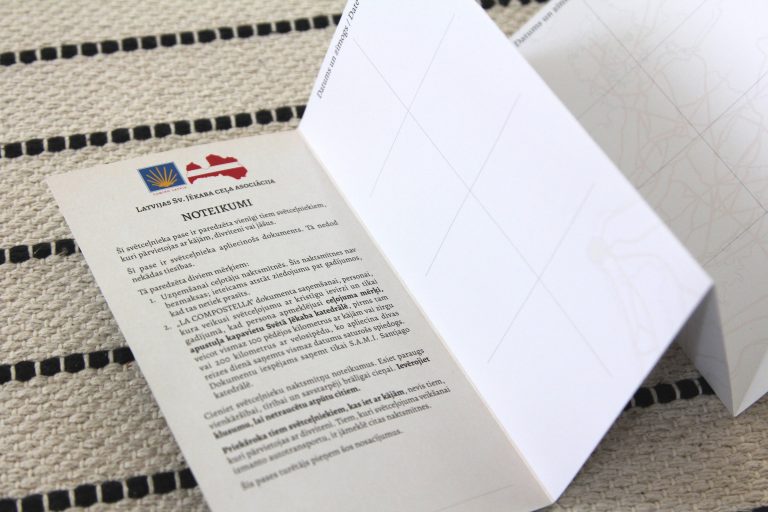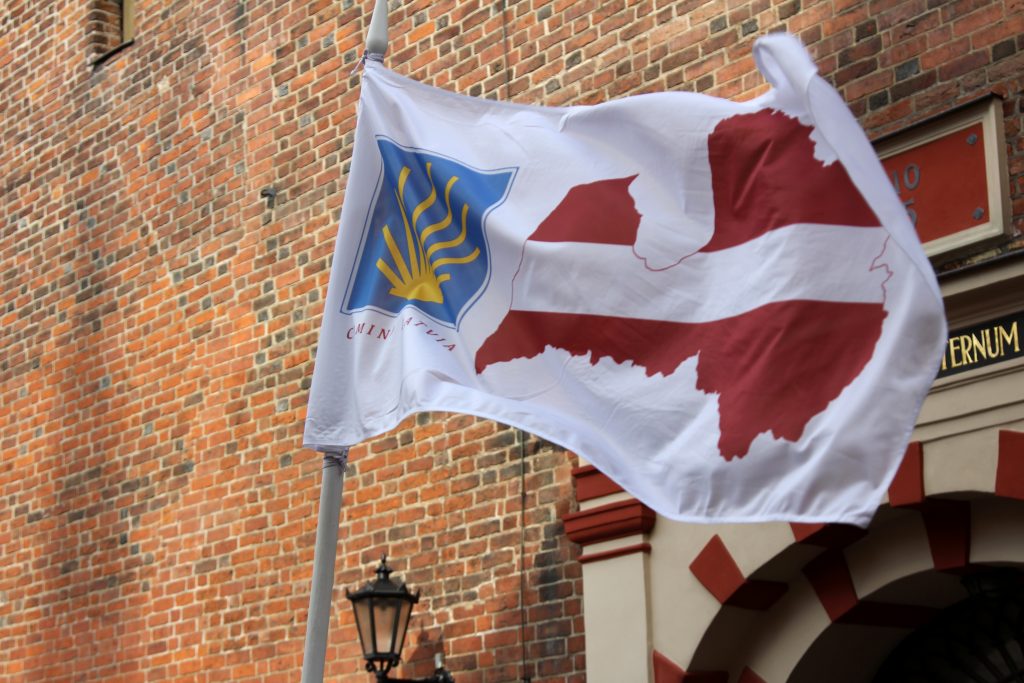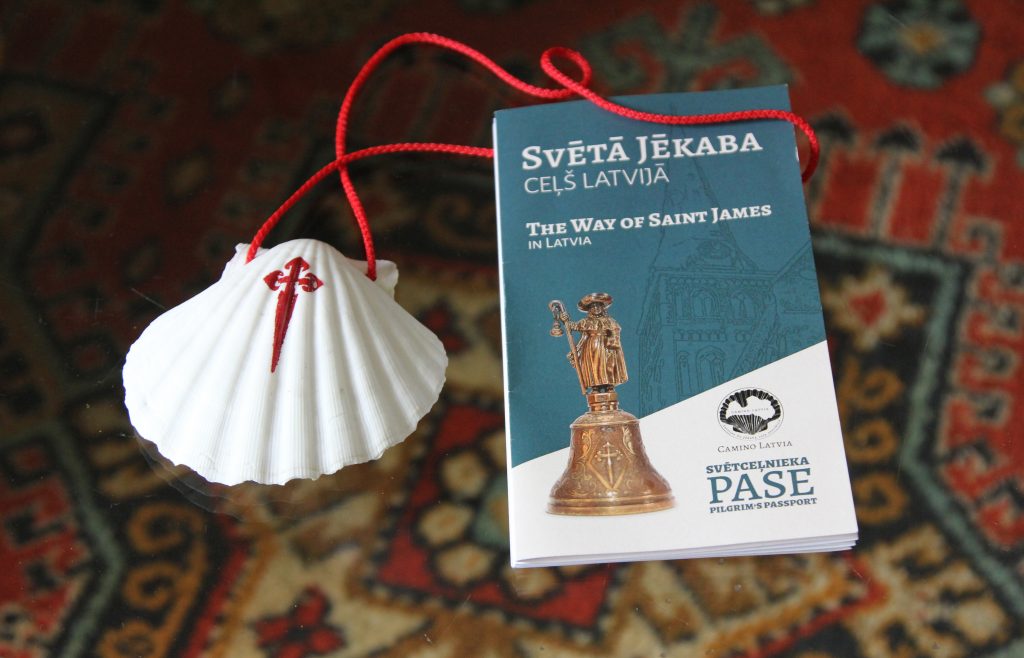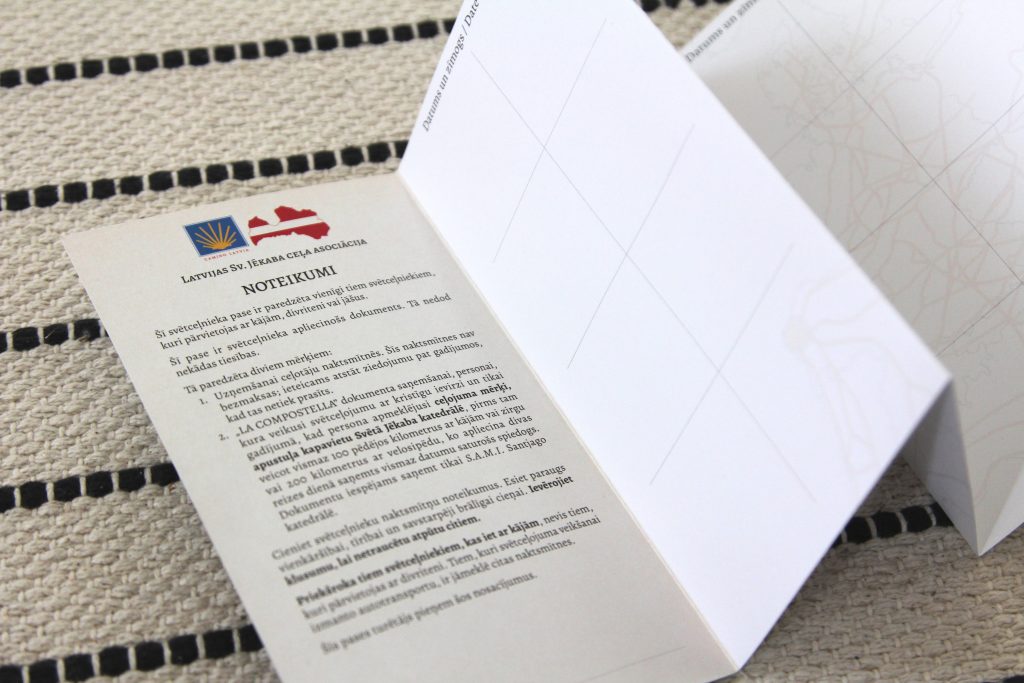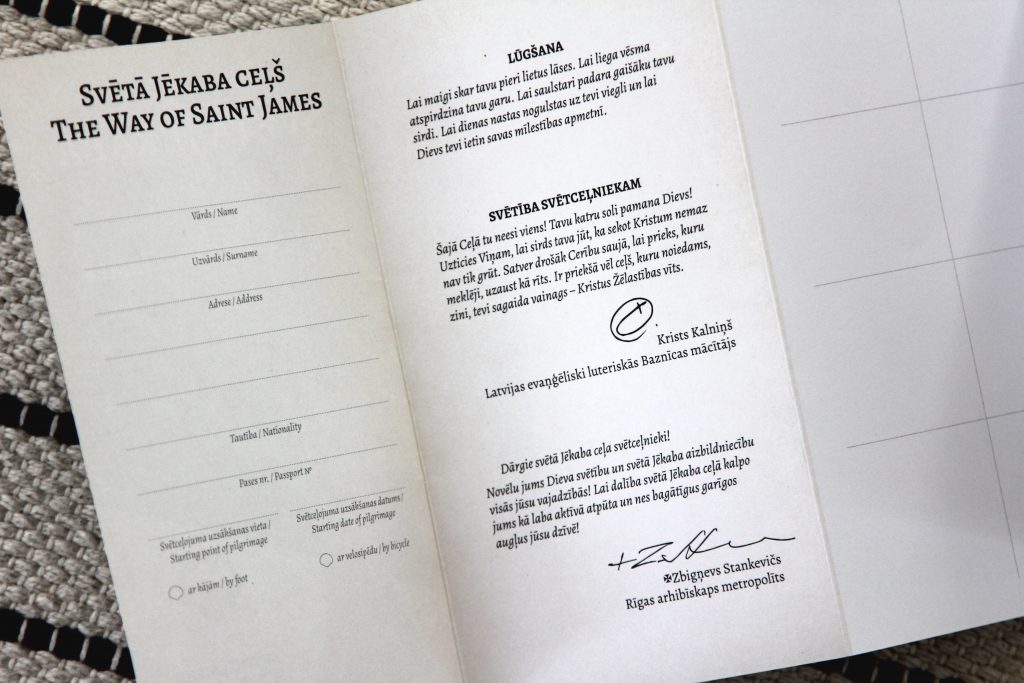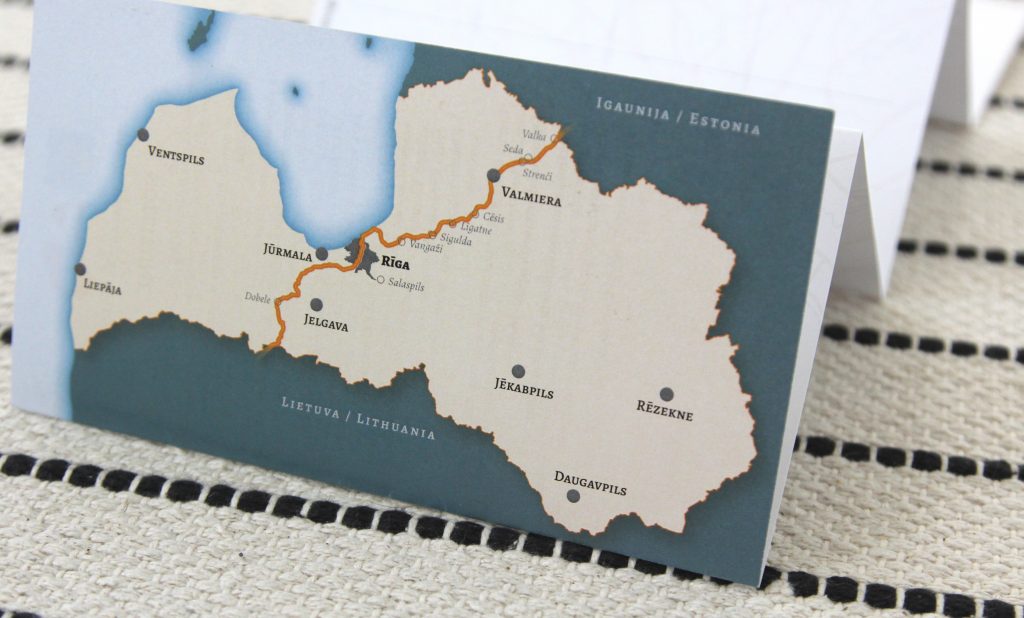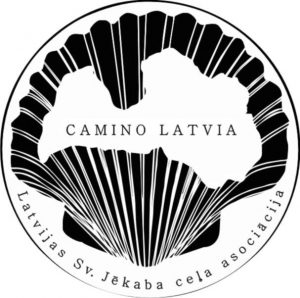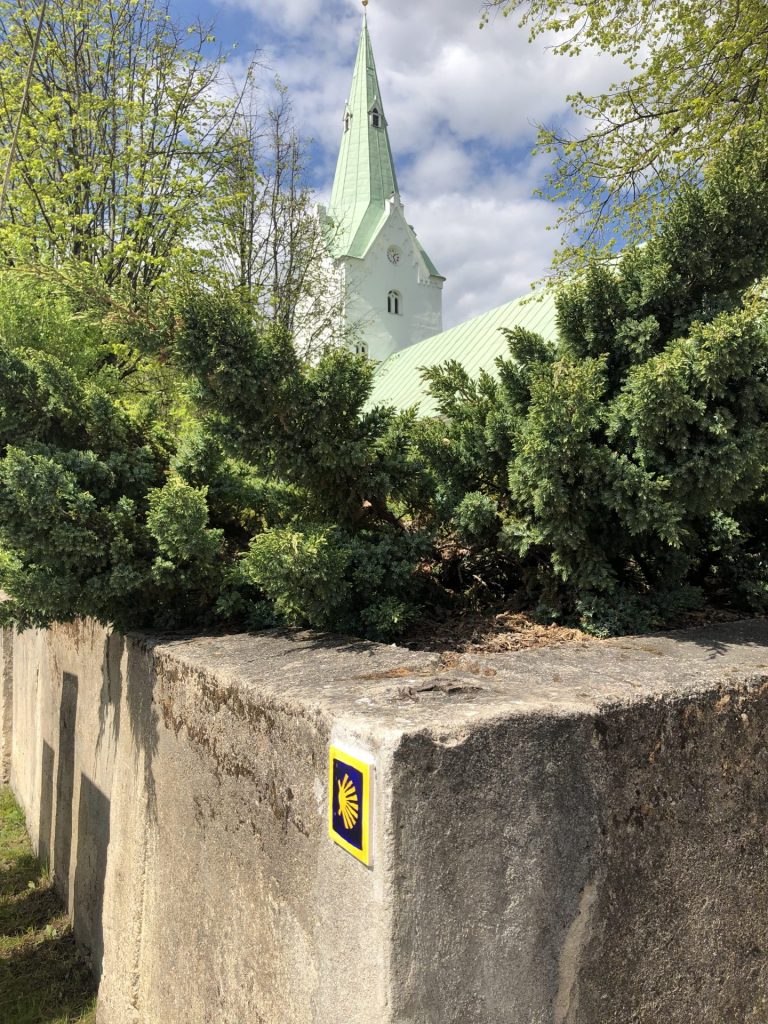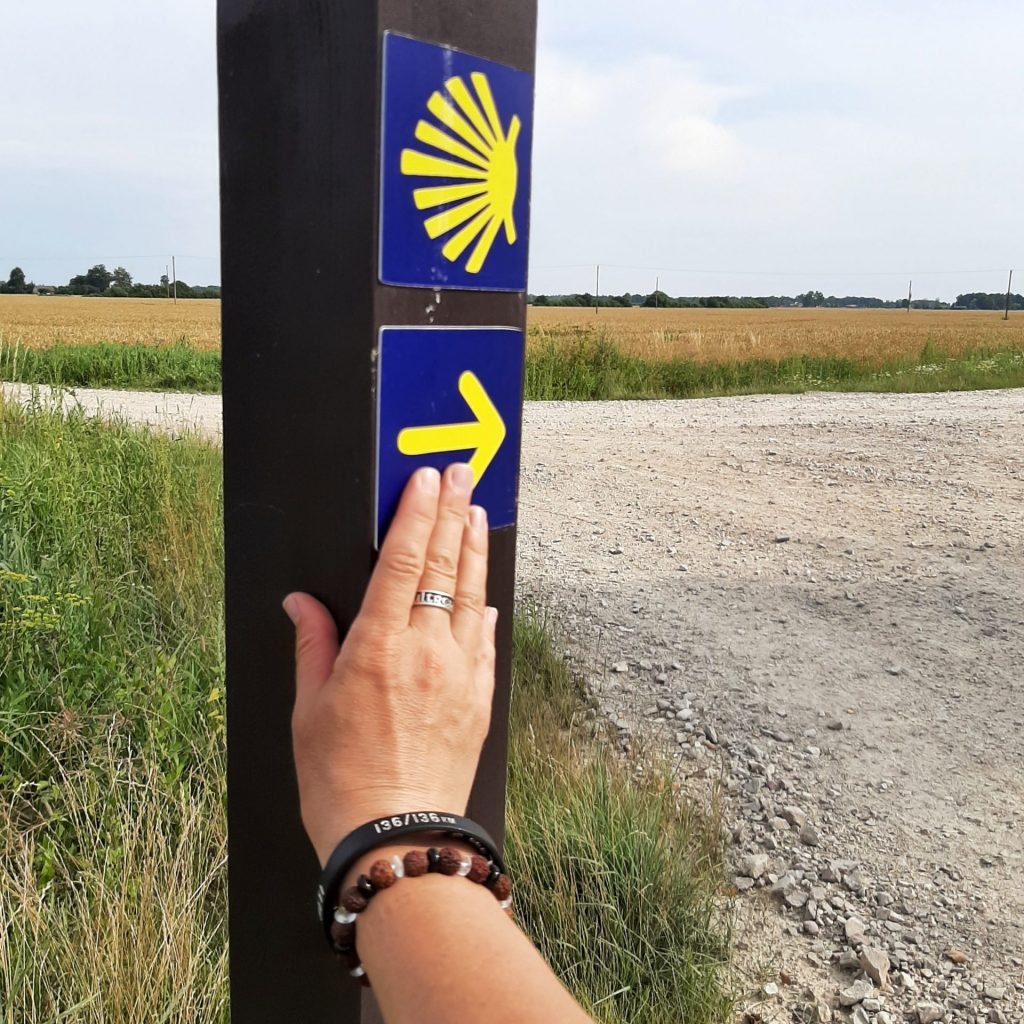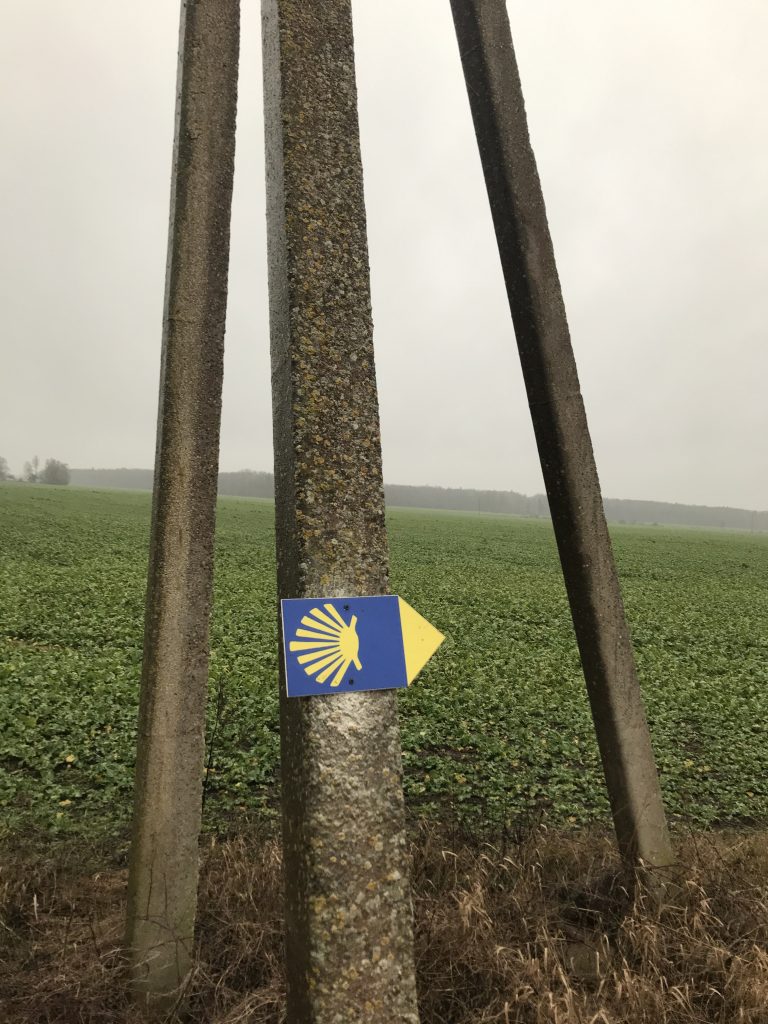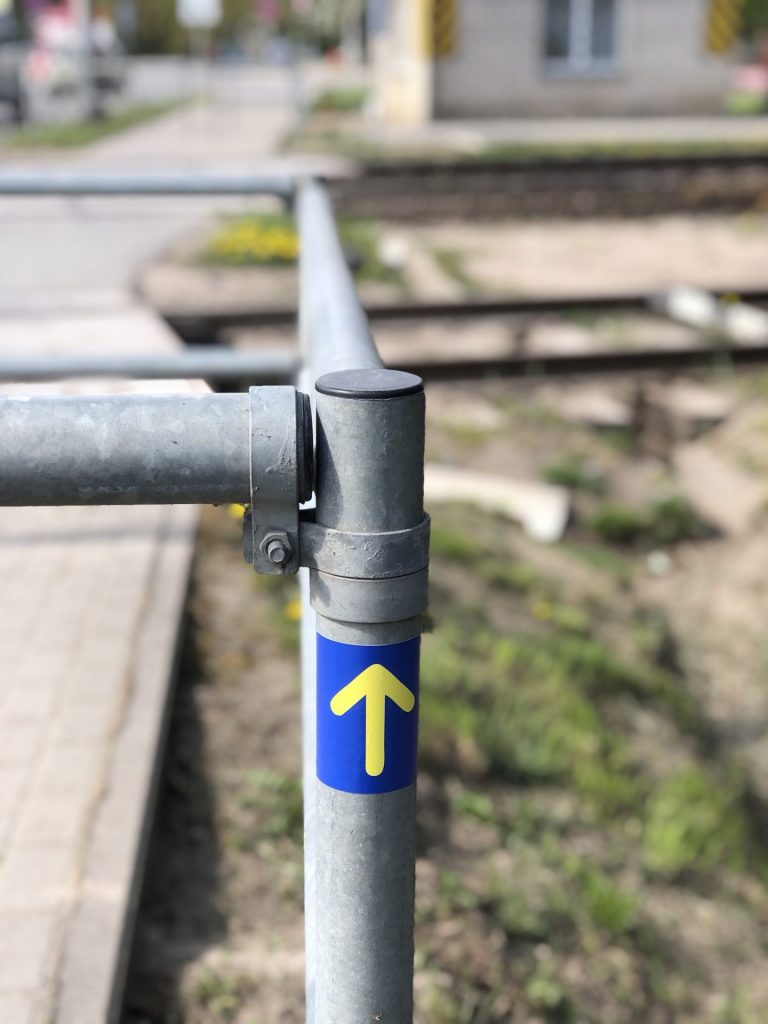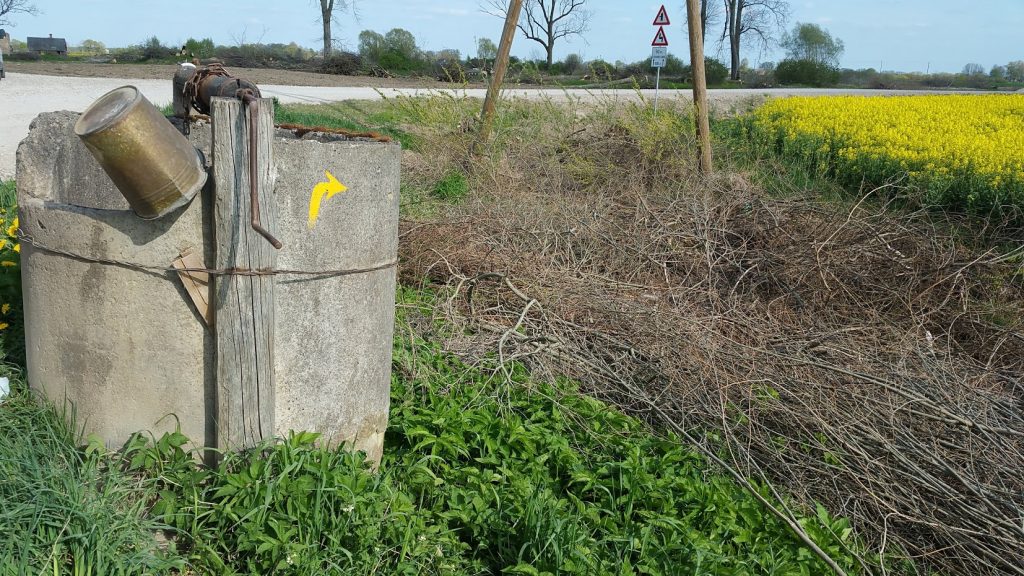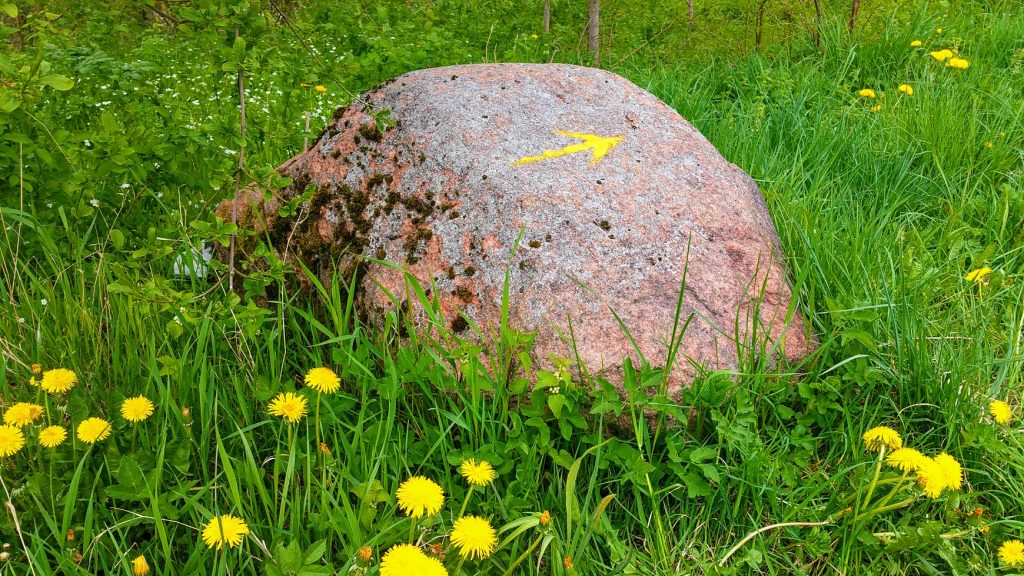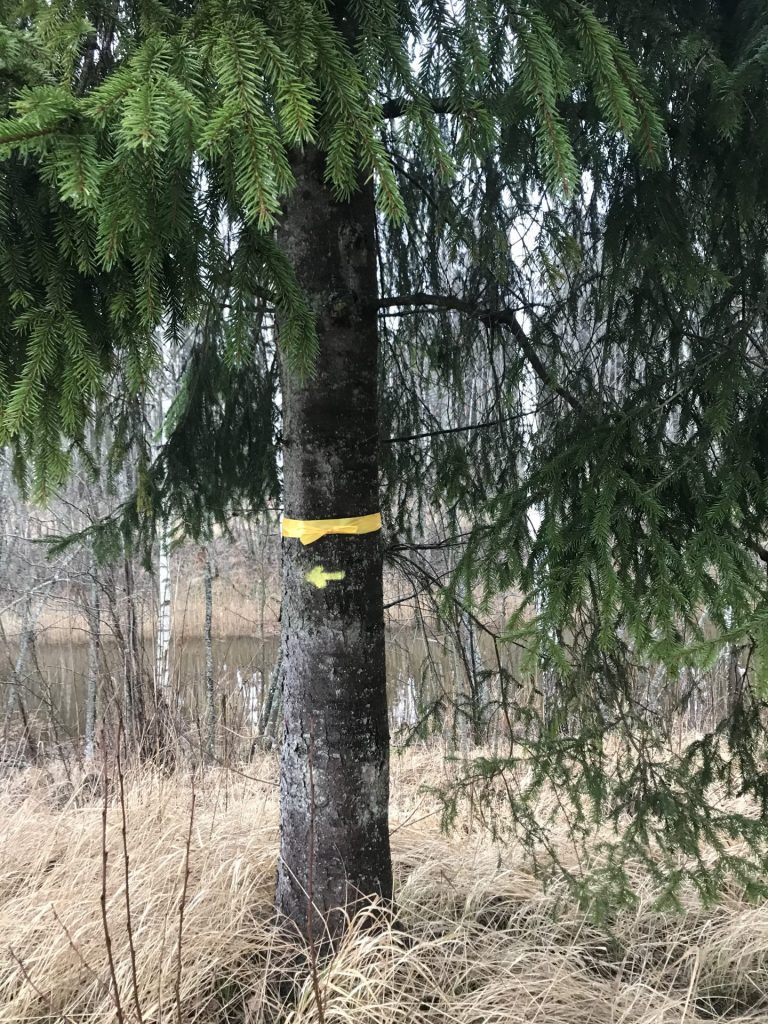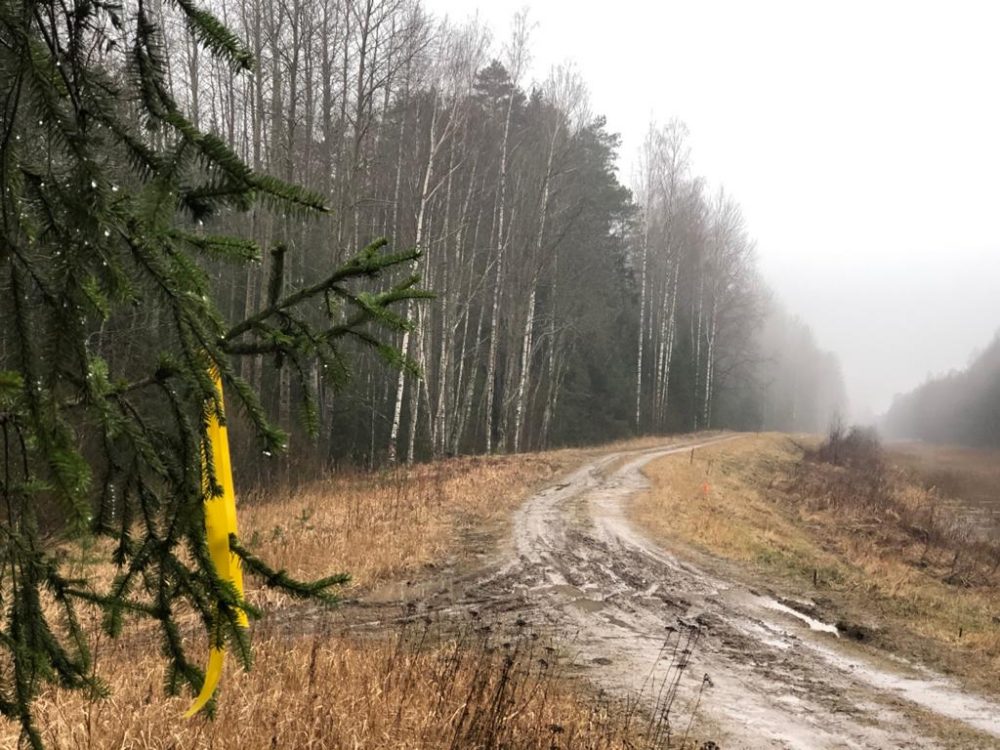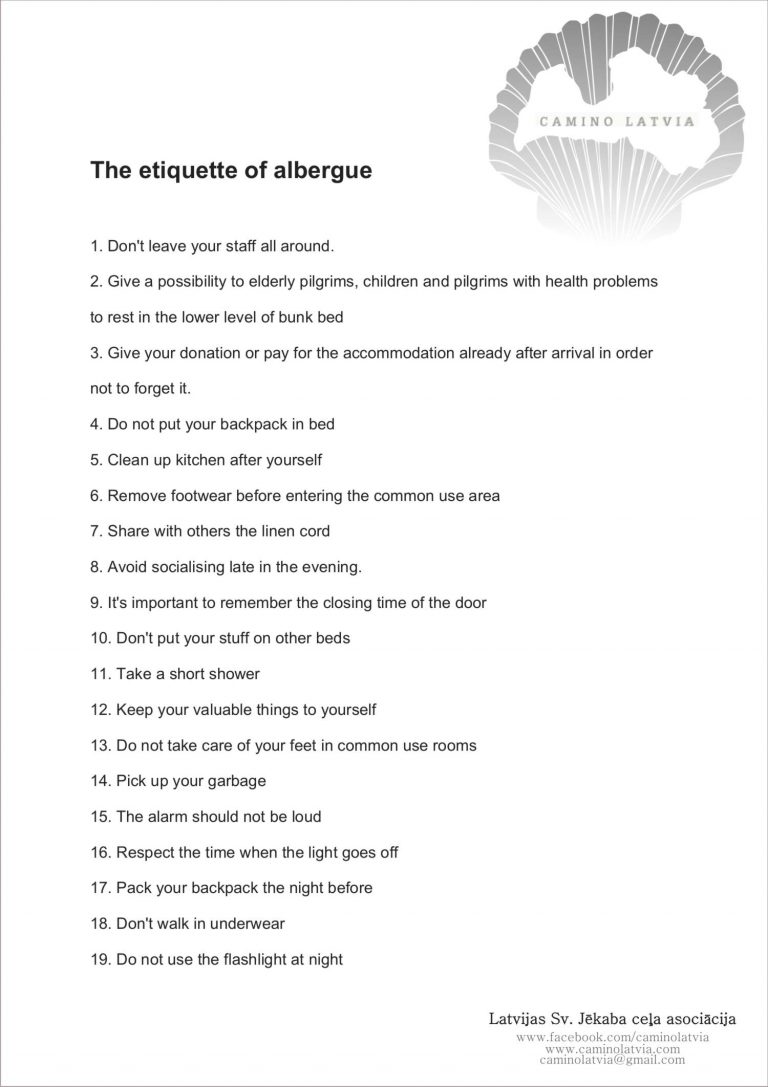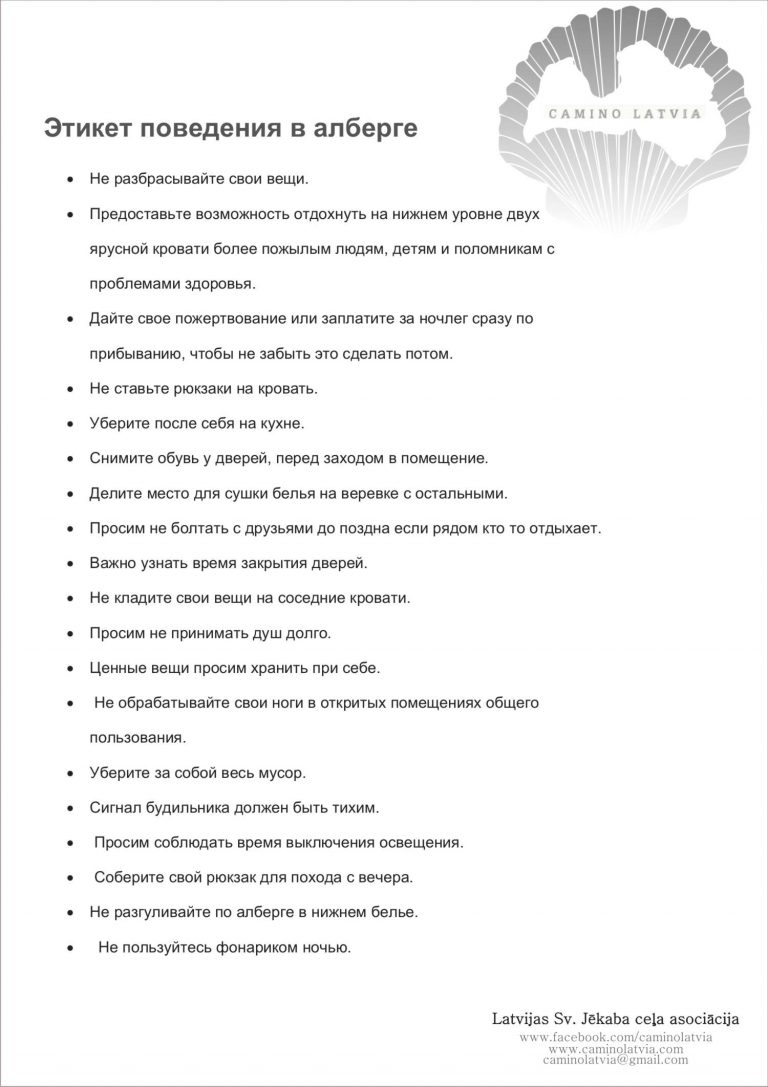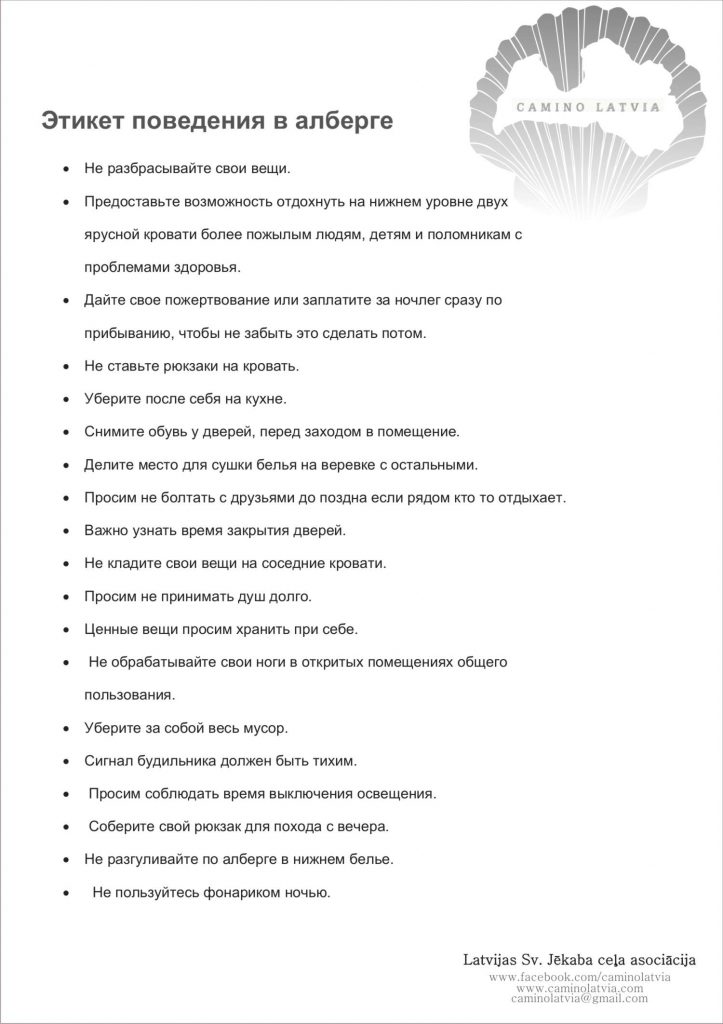Information
What is the St. James way?
The Saint James Way or Camino de Santiago is one of the main historic pilgrimage routes in Europe.
Its origins come from the 9th century, when, according to tradition, the forgotten tomb of apostle James was discovered in Galician, Spain, and the Cathedral of Santiago de Compostela was built over it.
Already in the 11th century, pilgrimage to Santiago de Compostela grow till broad network of roads across Europe, extending tens of thousands of kilometres. As a result, both tangible heritage (bridges, churches and other prayer sites, hospitals, accommodation) and intangible heritage (songs, myths, legends) was formed along the route.
Hundreds of thousands of people make the St. James way every year and therefore different branches to the route are developed, as it is customary to believe that the pilgrimage begins already from everyone’s home. Already since the Middle Ages, St. James way symbolises the interaction between the various European cultures and exchange of history (see also Council of Europe (2018). Santiago de Compostela Pilgrim Routes. Available:https://www.coe.int/en/web/cultural-routes/the-santiago-de-compostela – Pilgrim-routes)
There are historical indications that also through the current territory of Latvia, medieval pilgrims have travelled to Santiago de Compostela. Turaida Museum Reserve exposits medieval pilgrims’ signs – cross from Luca (Italy) and shell symbolising pilgrimage to Santiago de Compostela, both found in archaeological excavations of Turaida Palace. In 2020 a message from Cesis The Church of St. Janis came that during reconstruction, archaeologists have found an ancient completely healthy pilgrim shelling, the mark currently in the expert-examination to determine its age etc.
In 1987, the historic route to Santiago de Compostela as the first is included in Cultural Route of the Council of Europe programme.
In 1993, the Camino de Santiago is incorporated into UNESCO’s world cultural heritage list.
From the 20th century mid-sixties interest in St. James way increases rapidly, in recent years reaching around 327 000 pilgrims per year from different countries and continents that have received certificate about completing the road. In reality the number of people, what goes this way every year is countless more, because many due to the time, financial and health limits or other reasons, make only a section of the road without reaching the destination at the Cathedral of Santiago de Compostela, and continue the way the following year or after some time.
Several hundred pilgrims from Latvia go different stages of this route each year. In 2018, 241 pilgrims from Latvia received official certificate about completing the road, 726 from Lithuania, 872 from Finland, 4785 from Poland, 25 296 from Germany, etc.
The symbol of St. James is the shell of the sea. It was once depicted on a pilgrim clothing, but now the symbol marks the whole path, so it serves as a guide to the road. More this road is known as the Milky Way Galaxy, because the French Road (which starts in the French town St Jean-Pied-du-Port) coincides with the direction of the Milky Way Galaxy, and in the Middle Ages pilgrims followed it for orientation. In the 14th century, a million pilgrims travelled along this road each year.
Association St. James Way in Latvia.
Association St. James Way in Latvia is a voluntary society involving people of different occupations and ages, all of whom have once walked the way to Santiago from Spain, France, Portugal, Italy, Germany or other countries. Based on the experience of pilgrims and on the common objectives and principles of the creation of the Santiago road set by the EU, we are developing and marking the stages of Camino Latvia.
Association was founded on January 8, 2019. Our association unites volunteers from various professions who during the process of creating the way have acquired new skills: website and social network maintenance, accommodation coordination, GPX track drawing, road description creation, road marking, approval of permits, creating presentations, guiding hikes, compiling publications, souvenir making.
On June 4, 2019, in St. James’s Cathedral, the Association’s flag and boundary plaques were consecrated, and the members of the Society were blessed for their future activities.
Between 2019 and 2020, the common map of Latvia was coordinated and marking works were carried out from Riga to Zhagare (Žagare).
In 2021, we carried out stage alignment work and marking on the Riga – Skaistkalne stages, and also started work in Vidzeme
In 2022, we continued obtaining approval permits for marking the territory of the Gauja National Park and carried out marking works in the stages of Vidzeme.
Border points in Skaistkalne, Žagare and Valka have been opened in cooperation with Camino Estonia and Camino Lithuania.
Every year we celebrate together Jacob’s Day on the 25th of July and make common plans to popularize the way so that there will be common Camino Baltija way.
For the purposes of popularization, we make and distribute souvenirs with symbols of St. Jacob’s Way, we organize hikes and story evenings.
We create forums of interest in social networks, where we hold discussions on various road problems.
https://www.facebook.com/caminolatvia
https://www.facebook.com/groups/CaminoBalticTalks
St. Jame’s way in Latvia is developed in accordance with the guidelines set by the International Association of St.James Way, support of the Archbishops of Latvia’s leading denominations and the support of the National Heritage Authority.
The objectives of the International St. James Way Association for the development of the St James Way:
1) To continue the European Culture Road Programme “Camino de Santiago” of the Council of Europe (St. Jame’s way) on the basis of the 1987 EU declaration on the principle of humanity, freedom, justice, which historically combines EU cultures.
2) In co-operation with local governments and tourism information centres, to form a St. James way network, using uniform symbolism of the St.Jame’s Way marking.
3) Coordinate action to build the St. Jame’s way, which would boost the interest of local people in European Christian roots, religion, culture, architecture, traditions. Reinforce the visibility of the sites associated with the history of the State and the Church.
4) To be aware of the importance of the pilgrimage tradition in preserving Christian roots in Europe and of strengthening the EU as a Christian value-based union, in order to promote and develop the tradition of pilgrimage in Europe as a whole, including in each country. Promoting the cultural exchange of European countries between the the cities, districts and regions of theSt. Jame’s way to demonstrate the cultural identity of Europe and its values. Promote local and international dissemination of our unique historical, cultural and intellectual heritage.
Pilgrim’s passport
To walk a St, James Way, a pilgrim’s passport is required in which the owners of accommodation press their seals for the stay and register each pilgrim.
A pilgrim’s passport can be obtained in
1) St. Jame’s Cathedral – 9 Jekaba Street, Rīga ( open daily 7 a.m. to 6 p.m.)
or LELB office – 4 M.Pils Street, Rīga ( contactperson Iveta, phone +371 29152687 daily 8 a.m. to 4 p.m. )
2) Mārupe tourist information and crafts house ( +371 29537466 )
3) Valka Tourism information centre (TIC) – Seminara street 1, Valka ( +371 26496945 )
4) Valka Ev.lut.church – Rīgas street 9, Valka ( phone +371 26131199 )
5) Strenči Ev. luth. church – Baznicas Street 2, Strenči ( phone +371 26 334361 )
6) Valmiera TIC – Bruninieku street 1, Valmiera ( phone +371 26332213 )
7) Cēsu TIC – Baznīcas square 1, Cēsis ( phone +371 28318318 )
8) Souvenir shop “Pie Karlīnes” in Cēsis – Rīgas street 21, Cēsis ( phone +371 26587777 )
9) Līgatnes TIC – Spriņģu street 2, Līgatne ( phone +371 64153169 )
10) Sigulda TIC – Ausekla street 6, Sigulda ( phone +371 67971335 )
11) Shop “Labumu bode” – Daugavas pr. 63, Ikšķile ( open Mon – Sat 8.30 a.m. to 8 p.m., San 8 a.m. – 6 p.m. )
12) Vecumnieku TIC – Rīgas street 34, LV-3933 Vecumnieki ( phone +371 22026494 )
13) Albergue Livberze – Bērzu Street 7 flat 14, Līvberze, Jelgavas novads ( phone +371 29284599 )
14) Dobeles TIC – Baznīcas street 8, LV-3701 Dobele ( phone +371 28675118 )
A fee for it Eur 4.00.
PILGRIMS ‘PASSPORTS MAY ALSO BE SENT BY POST OR COURIER TO YOUR RESIDENCE. PLEASE WRITE TO E-MAIL caminolatvia@gmail.com.
The postal expenses will be added to the fees for the passport.
Road marking signs
A road marking signs for The St. James Ways are a yellow arrow and a symbol of shell on deep blue base. In Camino Latvia you will find these symbols in several ways – wooden signposts or as wooden arrows attached to trees, stickers with arrow or shell, bird cages marked with arrows, yellow arrow painted on stones or other objects at a road side and even as simple as yellow fabric ribbons tied around a tree. Follow the signs and walk safely!
The etiquette of albergue

